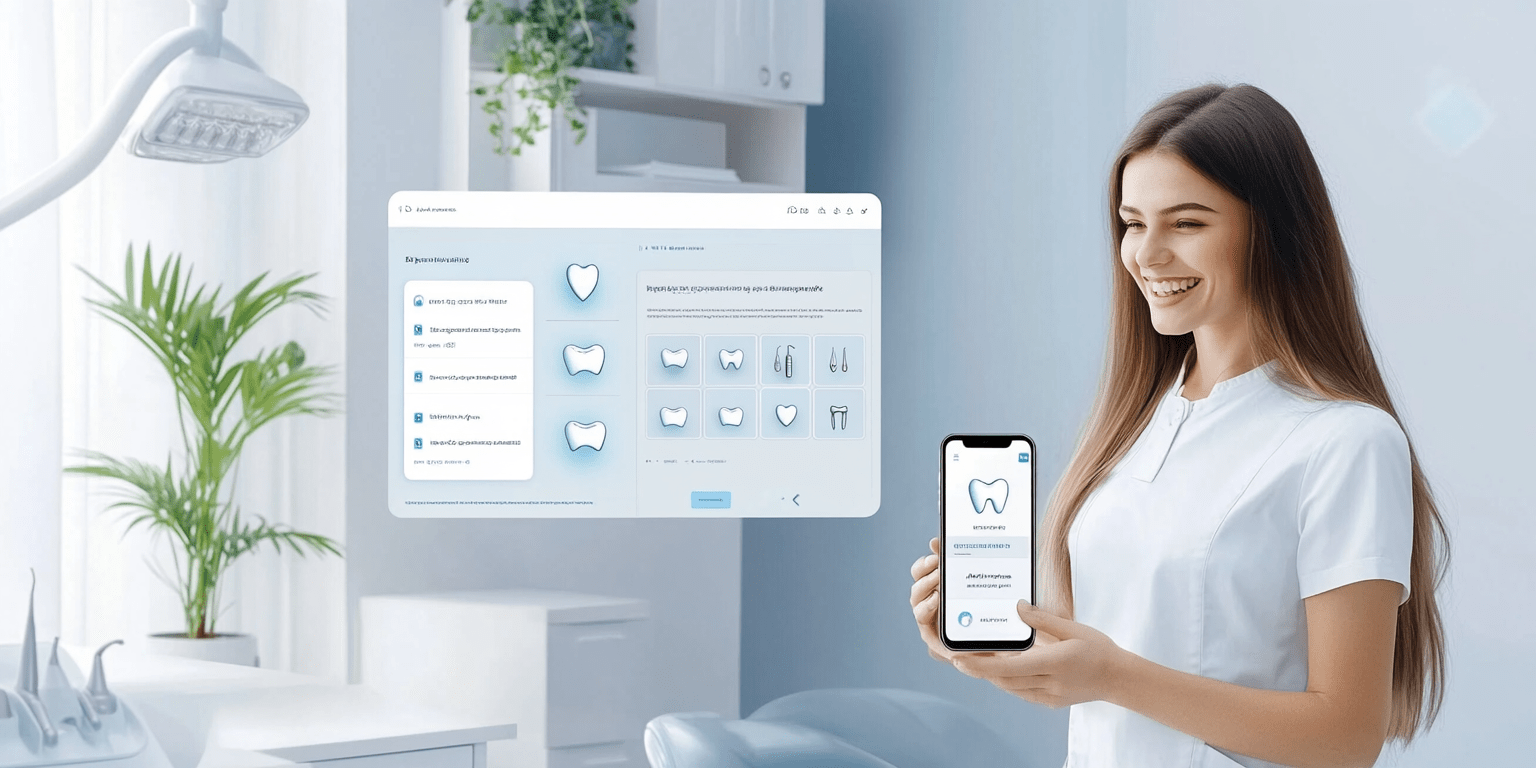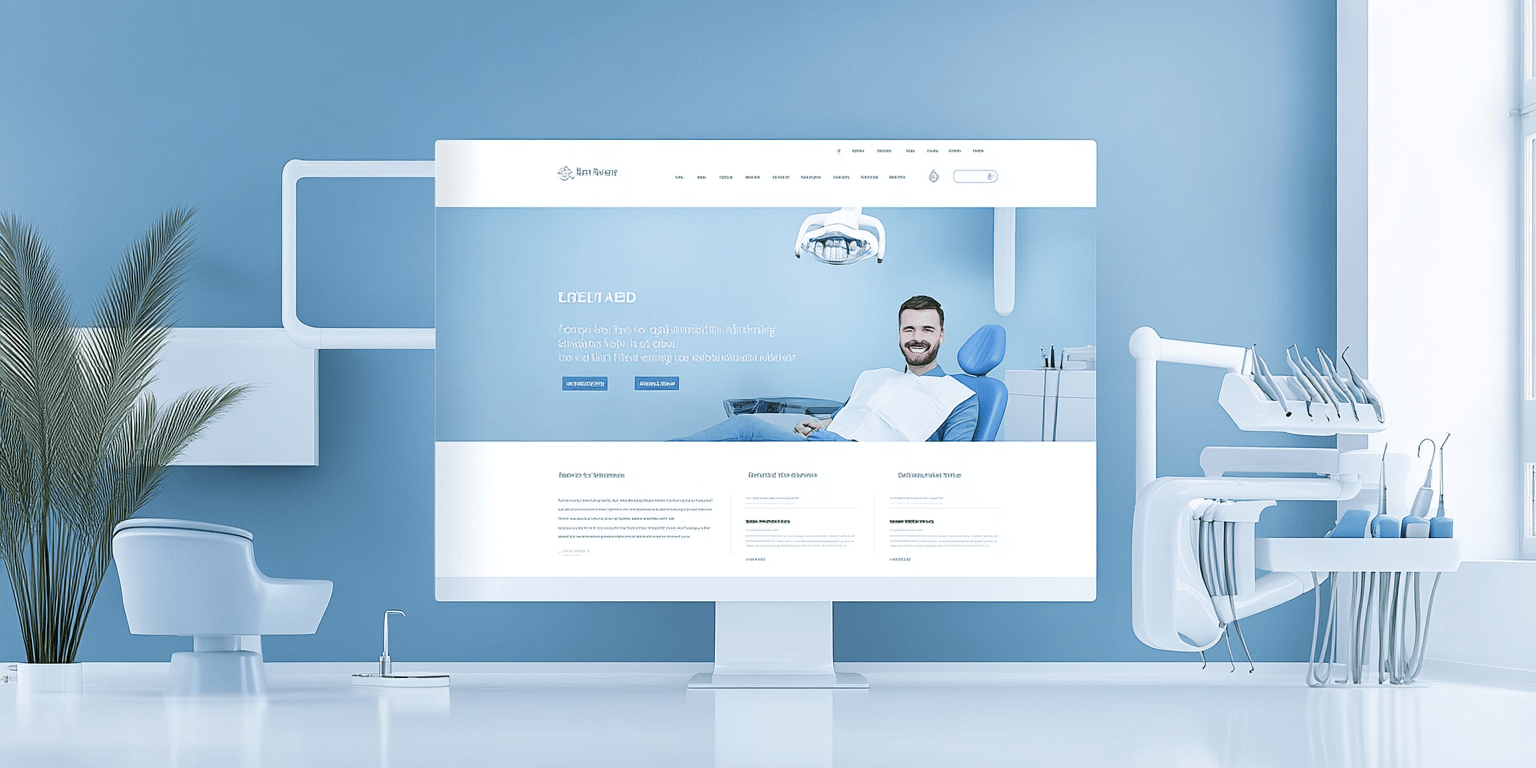In modern dentistry, it is no longer enough to focus solely on treatment, as people increasingly pay attention to how the clinic presents itself, what it offers, and how it stands out from competitors. First impressions are often formed before a visit even takes place – while browsing the website, where the user gets familiar with the clinic’s operations, evaluates the overall atmosphere, and makes the decision to reach out. This kind of trust doesn’t happen by chance, as the effectiveness of the website depends on how accurately it reflects the nature of the clinic’s services, meets audience expectations, and adheres to the requirements of medical content. So let’s take a closer look at how to order website development for a dental clinic, what to consider when preparing the project, and what mistakes to avoid during its implementation.

Common mistakes that prevent a site from attracting patients
The problem with most dental websites lies not in basic design or superficial content, but in a structure that doesn’t consider user behavior. This often results from relying on typical solutions, where the page about creating a clinic website looks like a generic manual. In practice, this approach only reinforces the most widespread mistakes, including:
- Lack of transition scenarios. The structure does not guide the user toward action – there is no logical flow between blocks, so even if someone is interested in a service, they never reach the booking form and leave the site without contacting.
- Repetitive content on pages. Repeating information about schedules, consultations, or other details creates a sense of disorganization, making the site seem less like a cohesive corporate tool.
- Unclear service titles. If page titles don’t explain the content, patients confuse preventive care with diagnostics, don’t see the difference between cleaning and treating cavities, and don’t understand the need for a full examination.
- Ignoring patient needs. A lack of mentions about comfort, explanations of appointment format, or examples of treatment makes the presentation feel detached, complicating the connection with the visitor.
- No explanation of how to book. A person sees the form but doesn’t know how to choose a time, who handles the request, or how to receive confirmation, which makes the interaction seem unclear and untrustworthy.
- Identical structure across all pages. Regardless of the content, the sections look the same, blocks repeat, and the presentation doesn’t change depending on the context, so users quickly lose interest and stop interacting.
What elements build trust in the clinic
Trust on a website comes not from individual words or headlines, but from a presentation that conveys confidence, transparency, and logical coherence. That’s why before creating a corporate website for a business in this field, you should include visual and content elements that create a sense of reliability and safety. These include:
| Live photos of the clinic. | The user sees not an idealized visualization but the real interior of the clinic – this enhances the sense of transparency and helps evaluate the atmosphere, forming a first impression even before visiting. |
| Well-developed “About us” section. | Its content doesn’t duplicate the list of services but explains the treatment approach, values, and expertise level of the specialists, showing that the clinic focuses on patient needs rather than general wording. |
| Answers to frequently asked questions. | Information provided in advance addresses common doubts – the patient better understands how to prepare for an appointment, what the service includes, what the pricing entails, and what to expect after the visit. |
| Dedicated contact page. | A separate section with structured booking information and feedback options helps users navigate more quickly, reducing the barrier to initial contact and emphasizing ease of interaction. |
| Clear layout of content blocks. | When the structure is logically built and the presentation feels like part of a unified corporate environment, the site conveys a sense of order and consistency even before personal interaction. |
| Presence of reviews. | The ability to read patient impressions – from treatment technologies and equipment hygiene to staff attitude and service costs – builds trust and helps in making a decision. |
| Certificates and licensing documents. | When available publicly, they confirm the team’s qualifications, give patients a sense of safety, and provide an added guarantee when choosing a clinic. |

What to consider when building a dental website
An effective site is an extension of the clinic’s internal processes and should adapt to the target audience’s needs. If these aspects are not considered during preparation, the structure starts working against the clinic itself. That’s why the technical brief should immediately include thoughtful interaction planning and necessarily feature:
- Service catalog with filters. When procedures are organized by symptoms, age, or treatment area, the user finds the needed solution more quickly and doesn’t leave the site during the selection stage.
- CRM system integration. Its implementation automates appointment scheduling, request management, and tracking, reducing the administrative load – so we explain CRM integration in corporate websites to our clients even before development begins.
- Interactive location map. Thoughtful navigation with marked entrances and convenient reference points helps visitors prepare for the visit, reducing the number of clarifications and creating predictability even before arrival.
- Thorough mobile adaptability. If the site retains its functionality on a phone – from the menu to the order form – the user experiences no limitations and interacts with the resource just as easily as on a computer.
- Slider with clinical cases. Real treatment results, before-and-after photos, smiling patients, and brief descriptions of common situations build trust in the clinic’s approach and the team’s professionalism.
- Quick booking form. A simple format with minimal steps lets users leave a request right on the page, motivating even those who are not fully ready to reach out.
- Menu based on patient queries. When the structure matches user expectations instead of the clinic’s internal logic, navigation becomes simpler, making it easy to find what’s needed without extra steps.
Which is better – choose a template or order a custom-built website
When selecting a platform, many lean toward template solutions. The logic is clear – they look visually appealing, come with a ready-made structure, and require no complex setup. But that’s exactly where the main disadvantage lies. Adapting a template to fit your clinic’s specifics or adding new treatment areas – such as orthodontics, surgery, or implants – becomes nearly impossible. Even minor changes to layout or content require going through the contractor and changing the plan, creating constant dependency and increasing associated costs.
Considering all these limitations, it’s better to order a website that accounts for your clinic’s internal structure and service specifics. This makes it possible to allocate focus clearly, create separate user journey scenarios, and customize the presentation to fit your team’s exact workflow. Later on, the site can be easily expanded with new services or directions without rebuilding the system or undergoing lengthy approvals. This allows the website to grow with the clinic, remaining flexible and relevant even during scaling or specialization changes.

What determines the cost of developing a dental website
As for the budget, total costs depend on the type of website, its level of detail, and the number of tasks it solves. If it’s a basic structure with a few sections, the project is completed faster and without additional resources. But if a multi-level site is needed – tailored to user scenarios, with separate treatment pages, integrations, and visual content – the workload increases. That’s why we clarify all requirements for functionality, mobile version, content, and support from the start of the project, strictly adhering to the agreed deadlines and budget.
Need a website that attracts clients and meets the real needs of your clinic? Then we invite you to work with us. Before placing an order, check out the portfolio of QuatroIT web studio and choose a format that best reflects your project’s logic. Taking a comprehensive approach to implementation, we will consider the specifics of dental practice, internal processes, and user behavior scenarios – delivering a solution that ensures a stable flow of patients. Interested in our offer? Contact us – our team is here to help!











